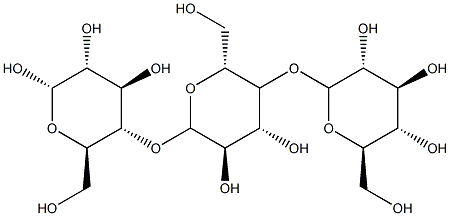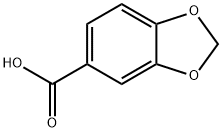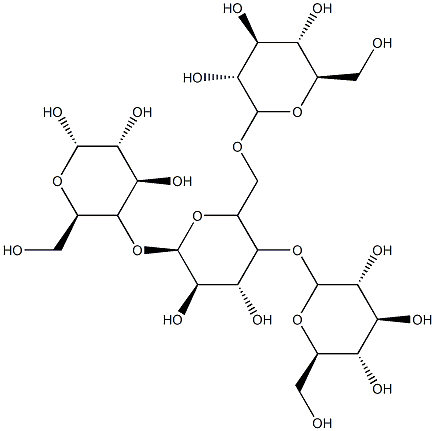Dextrin
- CAS NO.:9004-53-9
- Empirical Formula: C18H32O16
- Molecular Weight: 504.43708
- MDL number: MFCD00081554
- EINECS: 232-675-4
- SAFETY DATA SHEET (SDS)
- Update Date: 2025-12-17 09:49:44

What is Dextrin?
Description
Derived from dextrose (glucose), dextrin is a low-molecular-weight carbohydrate produced from the hydrolysis of starches. It can be made from any starch and is generally classified as white dextrins, yellow (or canary) dextrins, and British gums. Indigestible dextrin is a water-soluble dietary fiber extracted and prepared from the indigestible components in the resulting mush. Due to its water-soluble nature and adhesive qualities, dextrin is used in many glue products. Most dextrins are used as adhesives for paper products. Only white dextrins and only small amounts of them are used in prepared foods. White dextrins are prepared by heating dried, acidified starch. Dextrin can be used as green and biodegradable modifiers of the physicochemical properties of cement composites. Even with a minimum content of dextrin, it increases the fluidization of cement mixes, enables the reduction of mixing water, and contributes to the compressive strength of cement mortars[1-2].
Chemical properties
White powder
Chemical properties
Dextrin is partially hydrolyzed maize (corn), potato or cassava starch. It is a white, pale yellow or brown-colored powder with a slight characteristic odor.
The Uses of Dextrin
dextrin (British gum; starch gum) absorbs moisture. It is also used as a binder to control product viscosity and reduce the density of a cosmetic. This powder is produced from corn starch and modified by means of a bacterial process. It may cause an allergic reaction.
The Uses of Dextrin
Pharmaceutic aid (suspending agent); pharmaceutic aid (viscosity-increasing agent); pharmaceutic aid (tablet binder); pharmaceutic aid (tablet and capsule diluent).
The Uses of Dextrin
Dextrin is a partially hydrolyzed starch formed from the treatment of starch by dry heat, acid, or enzymes. it can be formed from amylose and amylopectin-type starches. they are white or yellow (canary) in color. as compared to unmodified starch, s have increased water solubility, viscosity stability, and reduced paste viscosity. uses include dough improvement and binding.
Production Methods
Dextrin is prepared by the incomplete hydrolysis of starch by heating in the dry state with or without the aid ofsuitable acids and buffers; moisture may be added during heating. The PhEur 6.4 specifies that dextrin is derived from maize(corn),potatoorcassava starch. A specification for cassava is included in the USP32–NF27.
Definition
A polysaccharide sugar produced by the action of amylase enzymes on or the chemical hydrolysis of starch. Dextrins are used as adhesives.
Definition
dextrin: An intermediate polysaccharidecompound resulting fromthe hydrolysis of starch to maltose byamylase enzymes.
Benefits
Slows sugar absorption (suppresses post-meal blood sugar rise);
Intestinal healing effect;
Slows fat absorption (suppresses post-meal triglyceride rise in the blood);
Reduction of visceral fat;
Promotion of mineral absorption.
General Description
Dextrin is basically a sweet sugar extracted from potato starch. Dextrin color range is from white to tan; it has low to high solubilities in cold water, and gives pastes that vary widely in viscosity. It is produced from all commercial grain and tuber starches. During its manufacture, the factors taken into consideration are type of starch and moisture content, roasting time and temperature, and the type and amount of catalyst used.
Agricultural Uses
Dextrin is a group of colloidal products, formed by the hydrolysis of starches with dilute acids or by heating dry starch. The yellow or white powder or granules obtained are soluble in boiling water and insoluble in ether or alcohol. Dextrin is used in adhesives, as thickening agents and in penicillin manufacture.
Pharmaceutical Applications
Dextrin is a dextrose polymer used as an adhesive and stiffening agent for surgical dressings. It is also used as a tablet and capsule diluent; as a binder for tablet granulation; as a sugar-coating ingredient that serves as a plasticizer and adhesive; and as a thickening agent for suspensions.
Additionally, dextrin has been used as a source of carbohydrate by people with special dietary requirements because it has a low electrolyte content and is free of lactose and sucrose.
Dextrin is also used in cosmetics.
Safety Profile
Mdly toxic by intravenous route. When heated to decomposition it emits acrid smoke and irritating fumes.
Safety
Dextrin is generally regarded as a nontoxic and nonirritant material at the levels employed as an excipient. Larger quantities are used as a dietary supplement without adverse effects, although ingestion of very large quantities may be harmful.
LD50 (mouse, IV): 0.35g/kg
Storage
Physical characteristics of dextrin may vary slightly depending on the method of manufacture and on the source material. In aqueous solutions, dextrin molecules tend to aggregate as density, temperature, pH, or other characteristics change. An increase in viscosity is caused by gel at ion or retro gradation as dextrin solutions age,and is particularly noticeable in the less-soluble maize starch dextrins. Dextrin solutions are thixotropic, becoming less viscous when sheared but changing to a soft paste or gel when allowed to stand. However, acids that are present in dextrin as residues from manufacturing can cause further hydrolysis, which results in a gradual thinning of solutions. Residual acid, often found in lesssoluble dextrins such as pyrodextrin, will also cause a reduction in viscosity during dry storage. To eliminate these problems, dextrin manufacturers neutralize dextrins of low solubility with ammonia or sodium carbonate in the cooling vessel.
The bulk material should be stored in a well-closed container in a cool, dry place.
Incompatibilities
Incompatible with strong oxidizing agents.
Regulatory Status
GRAS listed.Included in the FDA Inactive Ingredients Database(IV injections, oral tablets and topical preparations). Included in nonparenteral medicines licensed in the UK. Included in the Canadian List of Acceptable Non-medicinal Ingredients.
References
[1] BeMiller J, DEXTRINS. Encyclopedia of Food Sciences and Nutrition, 2003; 1773-1775.
[2] Sybis M, et al. Dextrins as Green and Biodegradable Modifiers of Physicochemical Properties of Cement Composites. Sybis, 2022; 15: 4115.
Properties of Dextrin
| Melting point: | 53.75-54 °C |
| Density | 0.8 g/cm3 |
| storage temp. | Store at RT. |
| solubility | H2O: 0.1 g/mL hot, complete, yellow to very deep yellow |
| form | powder |
| color | yellow |
| Odor | odorless |
| Water Solubility | Soluble in hot water (0.1 g/ml). |
| Sensitive | Hygroscopic |
| Merck | 14,2953 |
| Dielectric constant | 2.2(Ambient) |
| Stability: | Stable. Combustible. Incompatible with strong oxidizing agents. |
| EPA Substance Registry System | Dextrin (9004-53-9) |
Safety information for Dextrin
Computed Descriptors for Dextrin
| InChIKey | FYGDTMLNYKFZSV-MRCIVHHJSA-N |
| SMILES | O1[C@H](CO)[C@@H](O)[C@H](O)[C@@H](O)C1OC1[C@H](O)[C@@H](O)C(O[C@H]2[C@H](O)[C@@H](O)[C@@H](O)O[C@@H]2CO)O[C@@H]1CO |&1:1,4,6,8,13,15,19,20,22,24,27,31,r| |
Dextrin manufacturer
Clickchem Research LLP
New Products
4,4-Difluoropiperidine hydrochloride tert-butyl 9-methoxy-3-azaspiro[5.5]undecane-3-carboxylate Indole Methyl Resin N-Isopropylurea N,N-Dicyclohexylcarbodiimide(DCC) MELDRUMS ACID 5-METHYLISOXAZOLE-4-CARBOXYLIC ACID Magnessium Bis glycinate Zinc ascorbate 1-bromo-2-butyne 2-acetamidophenol 9(10H)-anthracenone Erythrosin B, 4-Piperidinopiperidine 2-((4-morpholinophenylamino) (methylthio) methylene) malononitrile 2,4-dihydroxybenzaldehyde 3-(4-morpholinophenylamino)-5-amino-1H-pyrazole-4-carbonitrile Methyl 2-methylquinoline-6-carboxylate 2,6-dichloro-4-nitropyridine 4-Bromo-2-chlorobenzonitrile 2-(benzylamino)acetic acid hydrochloride 4-(tert-Butoxycarbonylamino)but- 2-ynoic acid 3,4-dihydro-2H-benzo[b][1,4]dioxepine 1-Phenyl-1-cycloprppanecarboxylicacidRelated products of tetrahydrofuran








You may like
-
 White Dextrin StarchView Details
White Dextrin StarchView Details
9004-53-9 -
 Dextrin from corn Type I, powder CAS 9004-53-9View Details
Dextrin from corn Type I, powder CAS 9004-53-9View Details
9004-53-9 -
 Dextrin (White) practical CAS 9004-53-9View Details
Dextrin (White) practical CAS 9004-53-9View Details
9004-53-9 -
 Dextrine white, for bacteriology CAS 9004-53-9View Details
Dextrine white, for bacteriology CAS 9004-53-9View Details
9004-53-9 -
 Dextrine white CAS 9004-53-9View Details
Dextrine white CAS 9004-53-9View Details
9004-53-9 -
 Dextrin CAS 9004-53-9View Details
Dextrin CAS 9004-53-9View Details
9004-53-9 -
 Dextrin (White) practical CAS 9004-53-9View Details
Dextrin (White) practical CAS 9004-53-9View Details
9004-53-9 -
 Dextrin white For Bacteriology CAS 9004-53-9View Details
Dextrin white For Bacteriology CAS 9004-53-9View Details
9004-53-9
